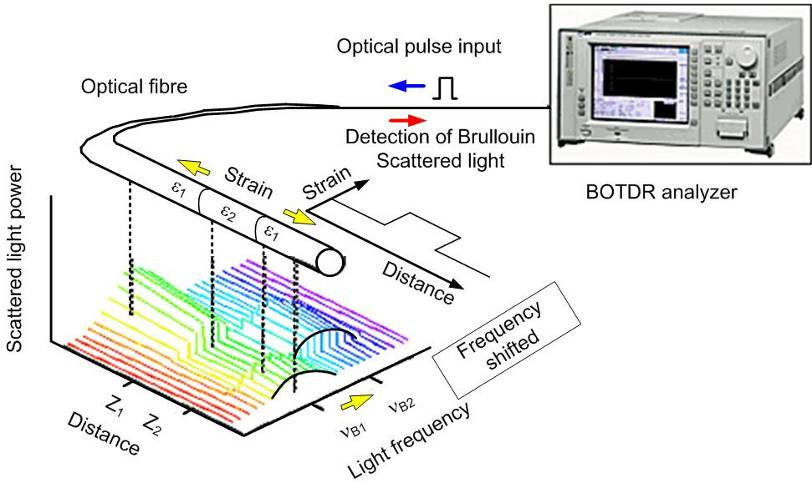Industry Standards Met by Optical Fibre Diameter Analyser Systems
Enhance Your Fibre Optic Projects With a Reliable Diameter Analyser
The assimilation of an efficient size analyser into fibre optic projects serves as an essential element in achieving precision and consistency. By facilitating precise diameter dimensions, these analysers not only enhance the quality of installments yet also mitigate prospective compatibility issues amongst parts. Moreover, the sophisticated capabilities of modern-day analysers simplify data collection and high quality control procedures. As we explore the critical attributes and advantages of these tools, it ends up being apparent how they can change project results and make sure adherence to market requirements. What remains to be discussed is how to successfully execute these analysers in your existing operations.
Significance of Diameter Dimension
Measuring the diameter of fiber optic cable televisions is a critical job that guarantees optimum performance and integrity in interaction systems. Accurate diameter measurement is crucial for various reasons, largely for maintaining signal integrity and decreasing loss. A wire's size directly influences its capacity to send light effectively; deviations from the defined size can lead to increased depletion, which impacts the general performance of the network.
Furthermore, accurate dimension is vital throughout the installment and upkeep of fibre optic systems. An inappropriate fit in between cable televisions and adapters can cause signal deterioration or total failing of communication links. By ensuring that diameters are within defined resistances, professionals can boost compatibility in between components, resulting in improved system reliability.
Furthermore, diameter dimension plays a substantial function in quality assurance throughout manufacturing. Consistency in the diameter of fiber optic cables is essential for making sure consistent efficiency throughout various sets. optical fibre diameter analyser. This uniformity assists makers maintain industry criteria and promotes confidence amongst end-users
Functions of an Effective Analyser
A reliable analyser for fibre optic projects have to integrate a number of key features that improve precision and functionality in diameter dimension. To start with, high-resolution optical sensing units are necessary for accurate diameter analyses, enabling users to find also the slightest variants in fiber density. These sensors must be enhanced by innovative calibration systems, guaranteeing consistent efficiency throughout various conditions and products.
Second of all, an easy to use interface is crucial for promoting convenience of operation. This includes user-friendly software application that enables smooth data input and outcome, along with graphes of the dimensions taken. A mobile layout improves usability in different area settings, making it less complicated to carry out assessments on-site.
Additionally, the analyser must support numerous dimension modes, fitting various fibre kinds and applications. The capability to store and retrieve historic information is an additional crucial feature, enabling individuals to track efficiency gradually and make informed decisions.
Benefits for Fiber Optic Projects
Applying a diameter analyser in fibre optic projects uses significant advantages that substantially improve job performance and top quality. Among the key advantages is the ability to make sure exact dimensions of fiber size, which is important for preserving optimal efficiency in fibre optic systems. Accurate diameter analyses assist in the identification of disparities that might result in signal destruction or loss, therefore making certain top quality transmission.
Furthermore, making use of a diameter analyser enhances the top quality control process. By automating measurement tasks, task groups can decrease the time invested in manual examinations, bring about faster project conclusion and reduced work costs. This effectiveness additionally permits even more rigorous screening procedures, click for more info causing improved product reliability.
In addition, uniformity in fiber size measurements advertises compatibility with various other fibre optic components, reducing the danger of installation mistakes and improving overall system efficiency. The unification of a size analyser not just help in keeping industry requirements however also promotes self-confidence in task deliverables.
Assimilation Into Existing Workflows
Incorporating a diameter analyser into existing next process can significantly boost the functional effectiveness of fiber optic jobs. By perfectly incorporating this technology, teams can achieve precise dimensions that are crucial to preserving the integrity and efficiency of fiber optic systems. This combination enables real-time information collection and evaluation, which can be crucial during the manufacturing and installment phases.
In addition, the ability to automate size dimension processes minimizes the potential for human mistake, making sure consistent quality assurance throughout the project lifecycle. The information generated can be easily shared throughout platforms, promoting collaboration among engineers, professionals, and job managers. This ease of access boosts decision-making and speeds up job timelines.

Picking the Right Size Analyser
When choosing a size analyser for fibre optic tasks, it is necessary to think about a number of key elements that straight effect dimension accuracy and operational effectiveness. Initially, the resolution and precision of the analyser must align with the certain demands of your project. Greater resolution tools can detect minute variations in diameter, this hyperlink which is vital for making certain ideal performance in fiber optic systems.
Following, examine the rate of measurement. For projects with tight due dates, a diameter analyser that uses fast information procurement can significantly enhance performance. In addition, consider the analyser's compatibility with existing systems and software application. A seamless combination decreases arrangement time and minimizes disturbances throughout operations.
An additional essential variable is the array of sizes the analyser can accommodate. By meticulously reviewing these aspects, you can pick a diameter analyser that boosts the effectiveness and precision of your fibre optic projects.
Conclusion
In verdict, the assimilation of a reliable diameter analyser is vital for enhancing fiber optic projects. Precise diameter measurements make certain optimal efficiency and reliability while reducing installment mistakes (optical fibre diameter analyser).
A cable's size straight affects its capacity to transfer light successfully; inconsistencies from the defined size can lead to increased attenuation, which impacts the general efficiency of the network.
